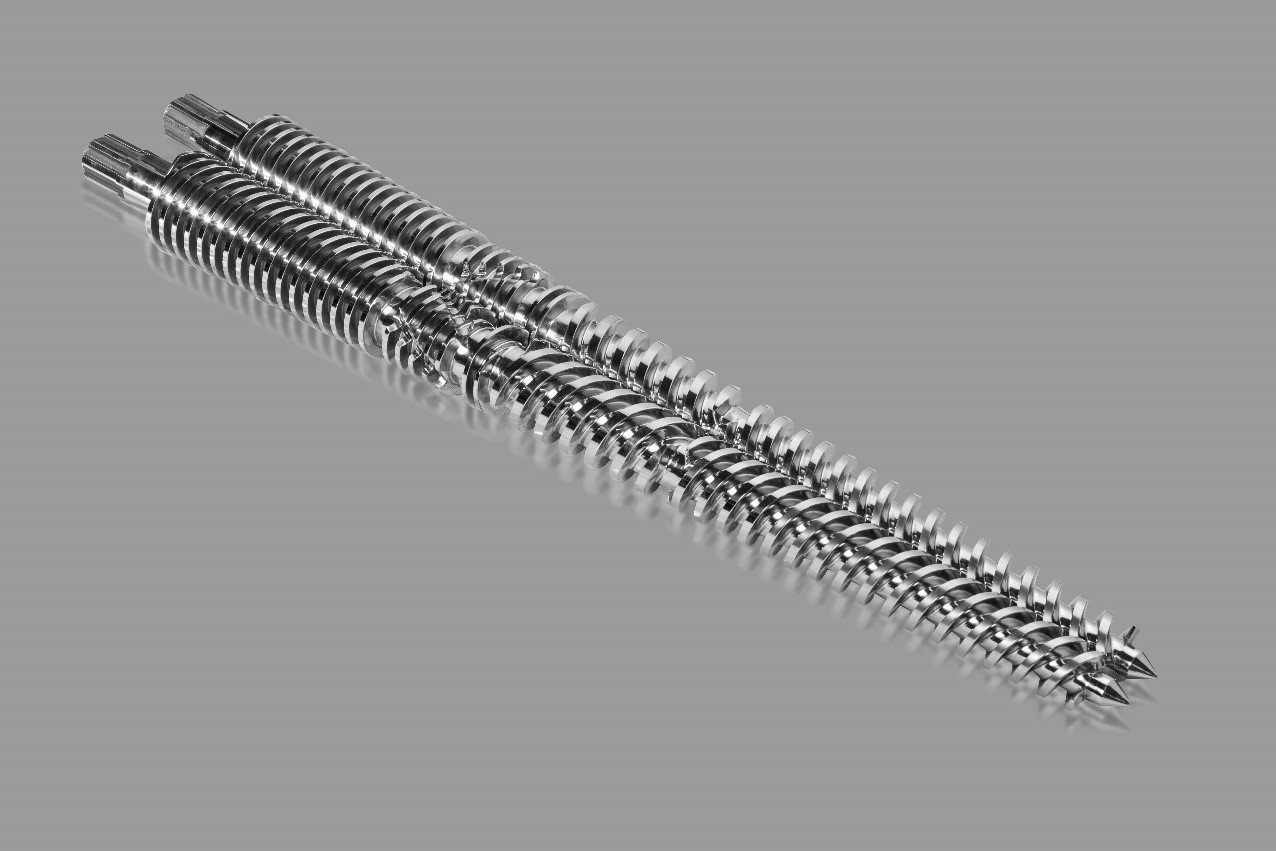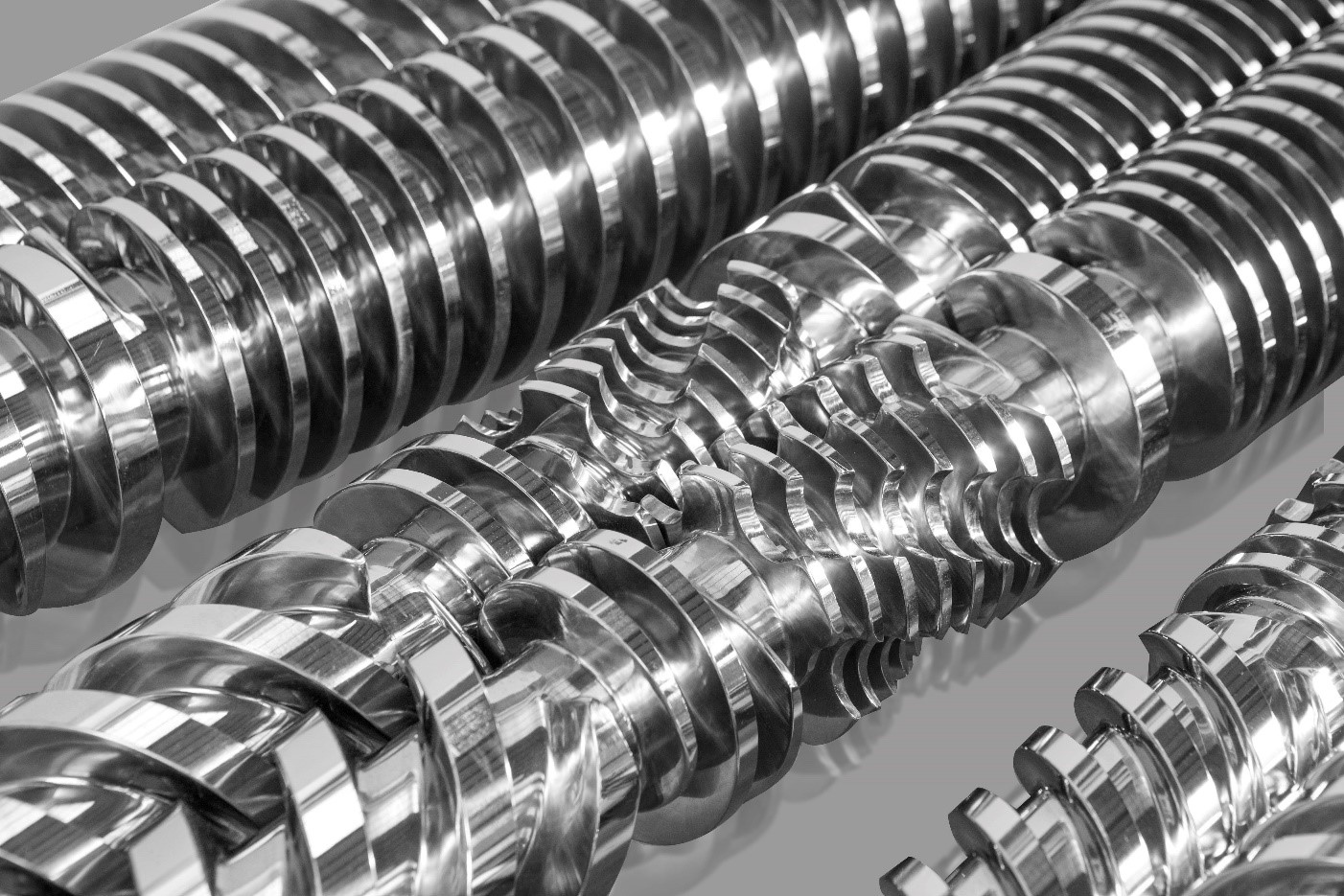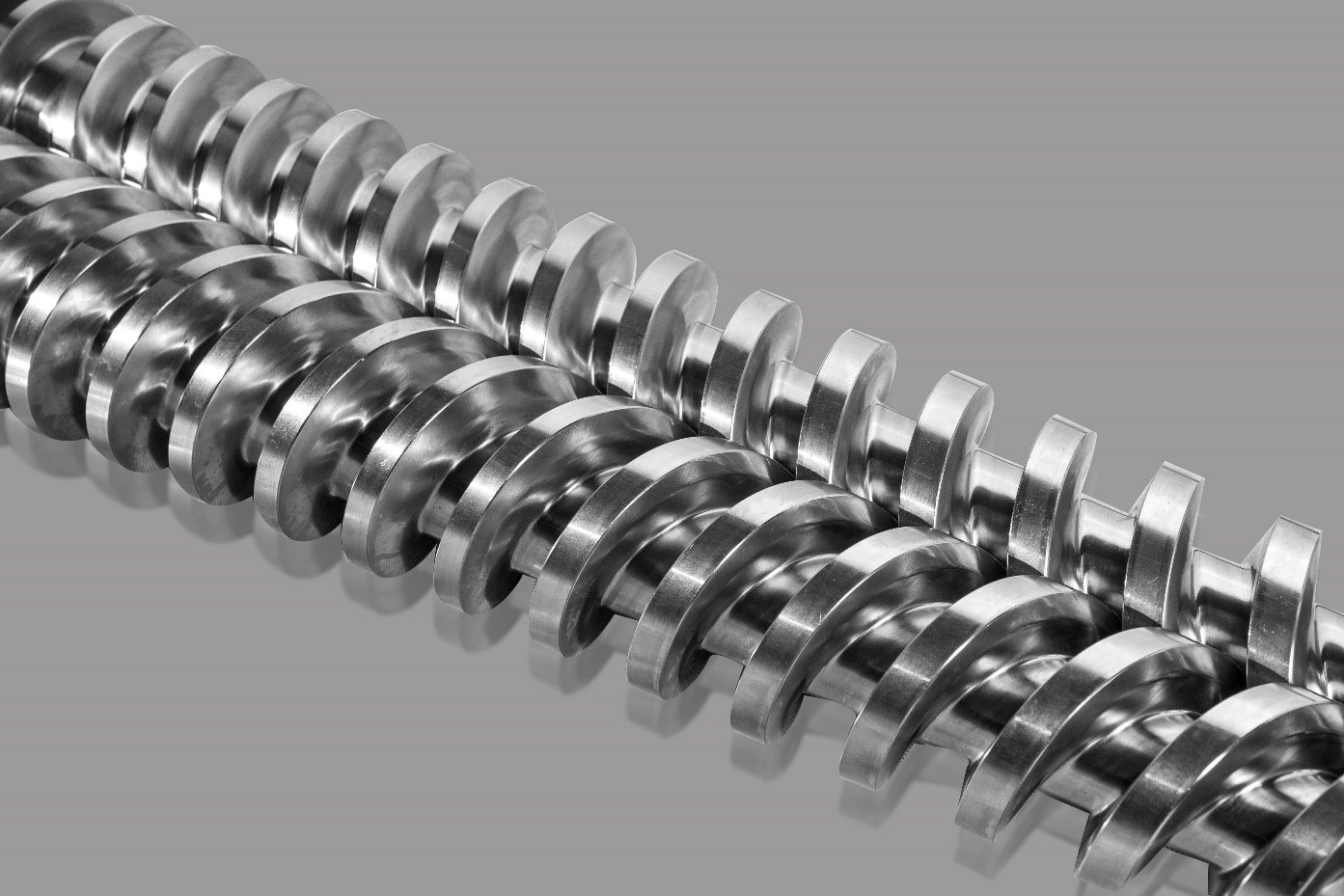Top 3 Types of Screw Design in Plastic Extrusion
Plastics Extrusion is a manufacturing process where raw plastic melts into a continuous profile. During the procedure, the material is gradually melted by the mechanical energy generated by the turning screws and heaters along the barrel.
For this reason, screws are critical components of plastics extrusion. Overall, the screw design has a direct influence on the achievable product quality.
As customers' demands become more specific, the screw structure needs to be redeveloped to apply different types of plastic extrusions. Various extrusion screws have different functionality. They can have a varying pitch, helix angle, length to diameter ratio, and length of processing stages.
You need to understand the details of different types of screw designs in our plastic extrusions. If you want to know more about it, check out our quick guide below.

3-zone screw
The primary extrusion screw has three distinct parts, each engineered to do a specific task.
l Feed zone
The feed section is behind the screw, where plastic pellets are gravity fed from above and conveyed forward. The core diameter of the screw is very minimal in the feed zone, typically four or five to one.
The build-up pressure is sufficient to transport the plastic. Because of that, the material can flow fluently into the screw channel and be transported in the axial direction. Therefore, the material can be compacted at the same time without any strong friction.
l Compression zone
In the compression zone area, the free volume will decrease as the core screw diameter increases continuously. This extra length provides plastic more time to heat up to a higher temperature. Thus, this will increase the friction and build up the pressure. Then the essential melting process will happen through two concurrent methods.
Barrel heaters will provide some initial melting, and the shear will complete this process. The shear is caused by the motion of the plastic against the barrel. As the pressure, shear, and friction increase, the plastic begins to melt and flow.
l Output zone (Metering zone)
Output zone is the place in which the core screw diameter will constantly maintain the maximum value. Depending on the application, the screw diameter length varies from four to eight diameters. Therefore, the material can be ejected and homogenized.

Barrier Screw
The barrier screw is widely used in plastic extrusion. In addition, it is used for processing a wide range of materials, from classic polyolefin to engineering thermoplastics.
l Why is barrier screw so special?
The unique feature of the barrier screw is an additional screw bar, called the "barrier bar," in the plastification zone. This "barrier bar" (placed behind the feed zone) starts with a steeper gradient through the entire plasticizing zone. Therefore, the "barrier bar" will disappear until the end of the plasticizing zone. The goal of using a "barrier bar" is to split the helical mount into two sub-areas. Therefore, it allows a separation of already melted material and the still existing solid bed (granules).
l What is the advantage of using a barrier screw?
In the classical screw, at the beginning of the compression zone, the plastic starts to melt and flow behind the lower barrier web, where the melt collects. In this case, most of the solid bed will remain behind the barrier web and surrounded by molten material. Under this situation, a few frictions will be applied to the granules, which will have adverse effects on the heat conduction. The result will worsen plasticizing performance.
In the barrier screw, since the "barrier bar" divides the melt and solid bed into two parts, the insulting melt cushion will be separated from the solid bed. As a result, direct friction can take place between the screw and the solid bed. Therefore, strengthen the plasticizing performance.
Barrier screws not only can improve the plasticizing performance but also have better homogenizing performance. However, it is not easy to control the melt temperature in barrier screw design since it has a complex design and hard to manufacture. This is the reason why its price is higher than the classical screw design.
Degassing Screw
It is inevitable to generate some unacceptable volatile components, such as monomers, vapors, gases, or solvents, during the melting process. This will lead to the necessity of using degas screw in the extruder. An additional degassing opening and a special degassing screw can solve this problem. The degassing screw has an area behind the compression zone where the core screw diameter will decrease. This will release the built-up pressure, and the volatile components can be discharged through an opening in the cylinder.
Degassing screws are usually used at the time when the volatile components need to be removed from the melting process, especially in the process of recycled materials.

Conclusion
Wuxi Boyu Plastic Machinery Co., Ltd. is specializing in the production of PVC floor extrusion production lines. We focus on technological innovation and research from product quality, environmental protection, and safety. We aim to make the equipment easy to operate, environmentally friendly, and safe.
If you are interested in further information, please check out our plastic extrusion solution. Contact us for further questions.





